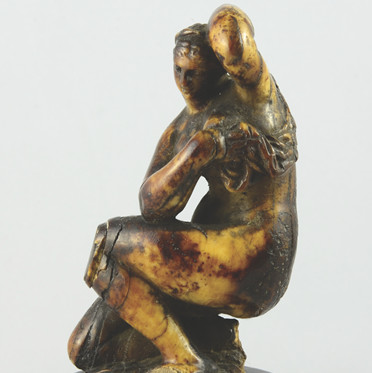Burned, buried, discovered
The label on the plaque of an ivory statuette in the BRLSI Collection says ‘Found by E.H. Wehnert at Pompeii’. ‘Found’? Could it be that Mr Edward Henry Wehnert (1813-1868), an artist and illustrator of children’s books, happened to make a lucky find among the ruins of Pompeii quite by chance? We know he visited Italy in 1858-9, and presumably acquired it then. Shortly after it entered our collection.
Unfortunately we have very little information about the story of this crouching Venus. She seems to have suffered some fairly serious damage. The ivory is charred and pitted. That might be what you would expect for something that has survived in the ground for 1780 years, since Vesuvius erupted in 79AD.
We’ve been curious if this could be the case. Does Wehnert’s claim stand up to scrutiny? Museum experts we have consulted have queried the condition of the ivory. Yes, superficially it looks as if it has been charred by extreme heat – yet not enough to destroy it. But was that burning deliberate, in order to make the object look older and the victim of a cataclysmic event?
On closer inspection…
Experts we have consulted raise a number of doubts:
• Fire damage of ivory tends to turn it greyish.
• The breakage of the head and raised arm appear rather too ‘clean’ for such a traumatic mishap as a volcanic eruption. Is this deliberate mutilation?
• The missing parts of the figure, like the broken knee, appear to have been broken before being burnt.
• The pitting of the back, which superfically suggests prolonged burial, must have taken place before the burning.
Venus in many guises
Our statuette is a miniature variant of an original sculpture depicting Venus (or Aphrodite) bathing, most commonly dated to the third century BC.
• Copies were especially popular in the Roman period, with artists reproducing the original in large numbers, in a variety of materials and sizes and with slight variations of pose. Most commonly Venus crouches with her right knee on the ground and covers her breasts with her right arm.
• Roman patrons often commissioned miniature copies for their private use, to decorate their homes. The use of valuable rock crystal, shown in an example here, marks this particular piece as a prestigious luxury item for a rich patron.
The theme of the Crouching Venus was taken up by Italian artists during the Renaissance, though they varied the position of the arms and upper body. The terracotta model below shows some resemblance to our ivory statuette, in the size of the head and the position of the towel.
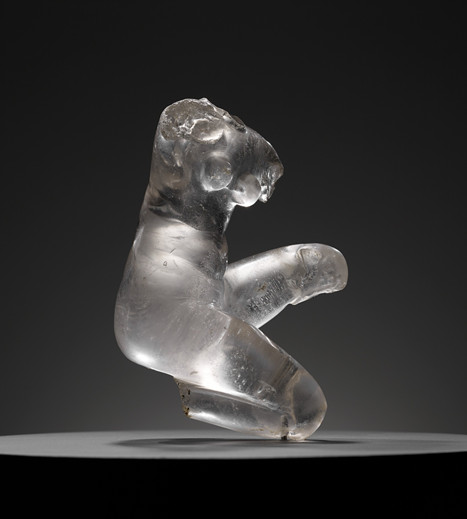
Roman rock crystal Statuette of Venus, 1st century BC. Paul Getty Museum, Villa Collection, Malibu, California, 78.AN.248
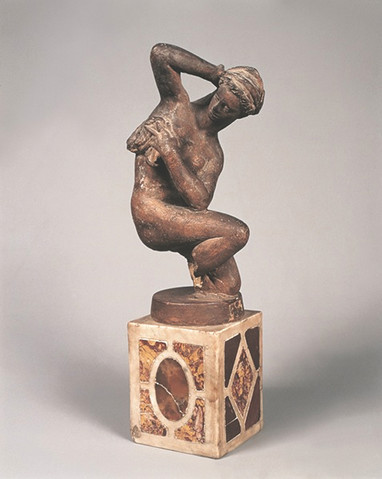
Terracotta model for a bronze statue 1565-6 by the Florentine scuptor Giambologna, Horne Museum, Florence, inspired by a Roman version of an original Greek sculpture.
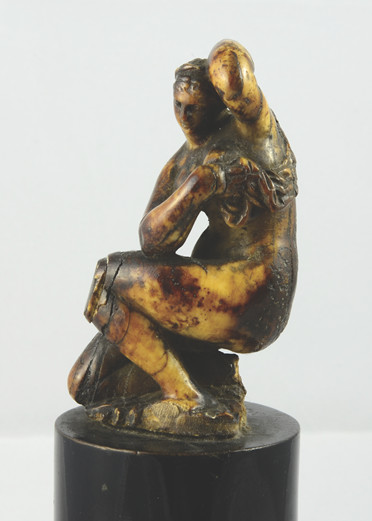
Our ivory Venus, with her relatively small head, large sharply-bent limbs and addition of a draped towel, is perhaps more reminiscent of these Renaissance and later Italian versions of the same subject.
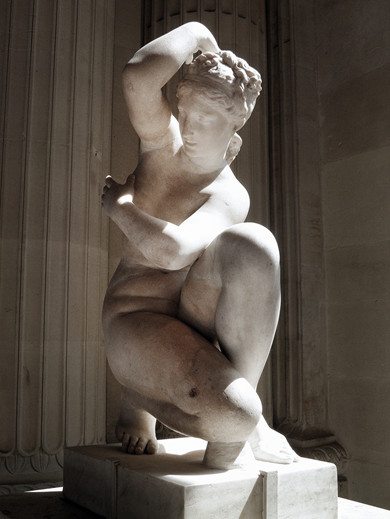
Crouching Venus Louvre Ma53, Roman version of a Greek original
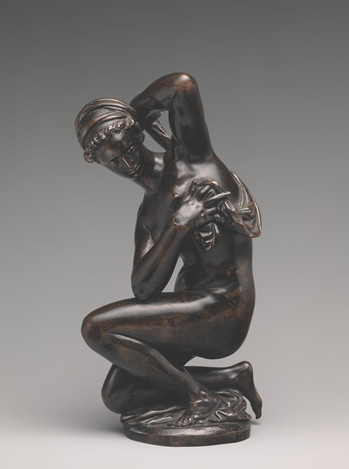
A bronze version, after a model by Giambologna, 17th century, Metropolitan Museum (a similar bronze, derived from Giambologna’s original but cast by Antonia Susini, is in the Holburne Museum, Bath).
Bringing home the souvenirs
Wehnert travelled to Italy in the 1850s, some time after the craze for wealthy young gentlemen to undertake lengthy travels, known as the Grand Tour, had faded. The advent of rail and steamship travel opened up the contintent to more middle-class adventurers. But the itinerary still included visits to archaeological excavations and the demand for ancient artifacts to take home as souvenirs grew. Cottage industries emerged to satisfy this demand, skilled in simulating the dirt and patina found on genuinely excavated objects.
Inevitably such things have ended up in museums. It’s a definite possibility that this ivory Venus is a competent forgery. But we know nothing of the details of Wehnert’s actual purchase.
Fake, forgery… or the genuine article?
More conclusive evidence is needed before we can make a judgement.
What next?
The ivory could be dated using Carbon-14 analysis in a specialist lab – for a price. A ‘modern’ date would confirm our suspicions. However, an ‘ancient’ date, while it might indicate the antiquity of the piece, might not be conclusive proof – there are examples of ancient ivories being re-purposed in modern times.
Whatever… It’s still a beautiful and enigmatic object.

